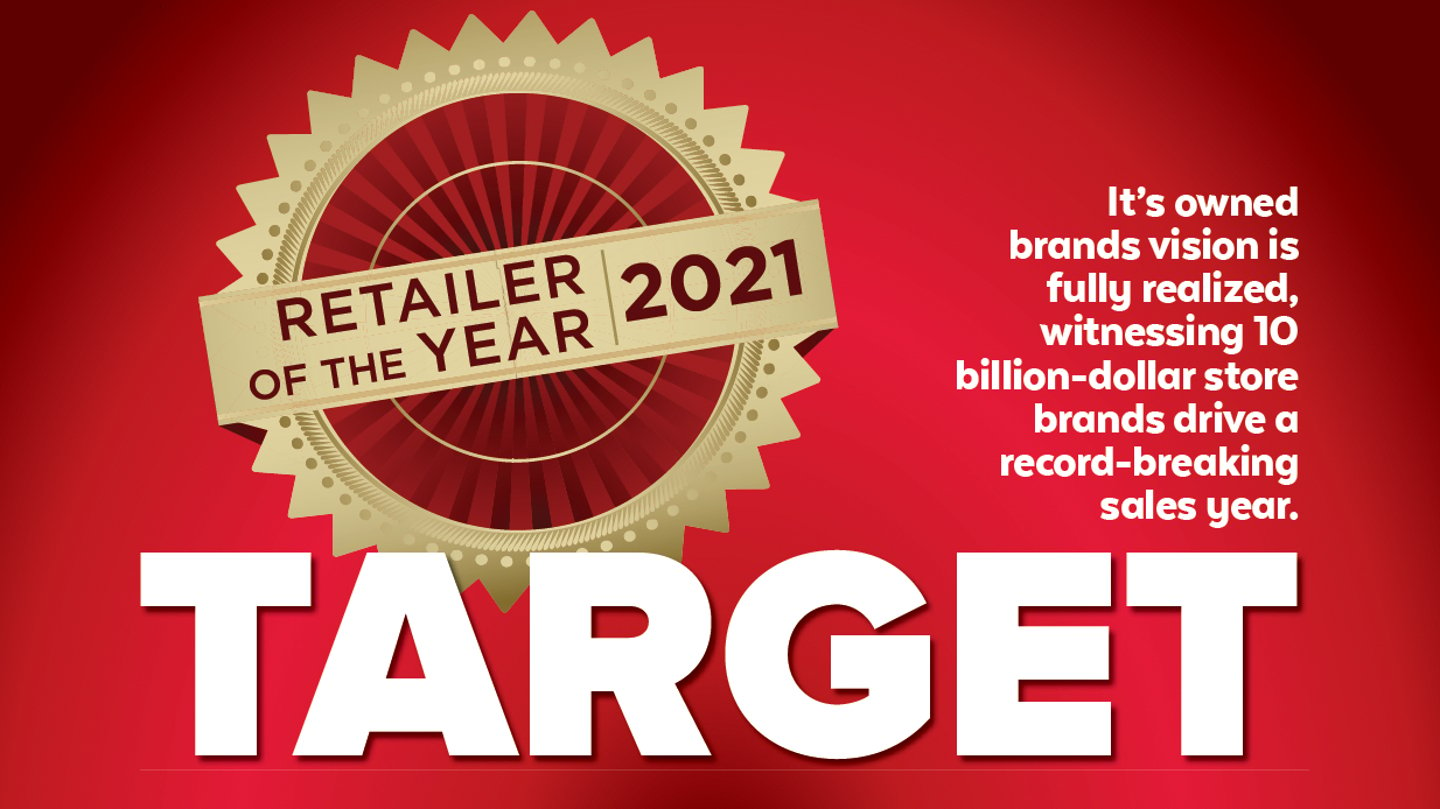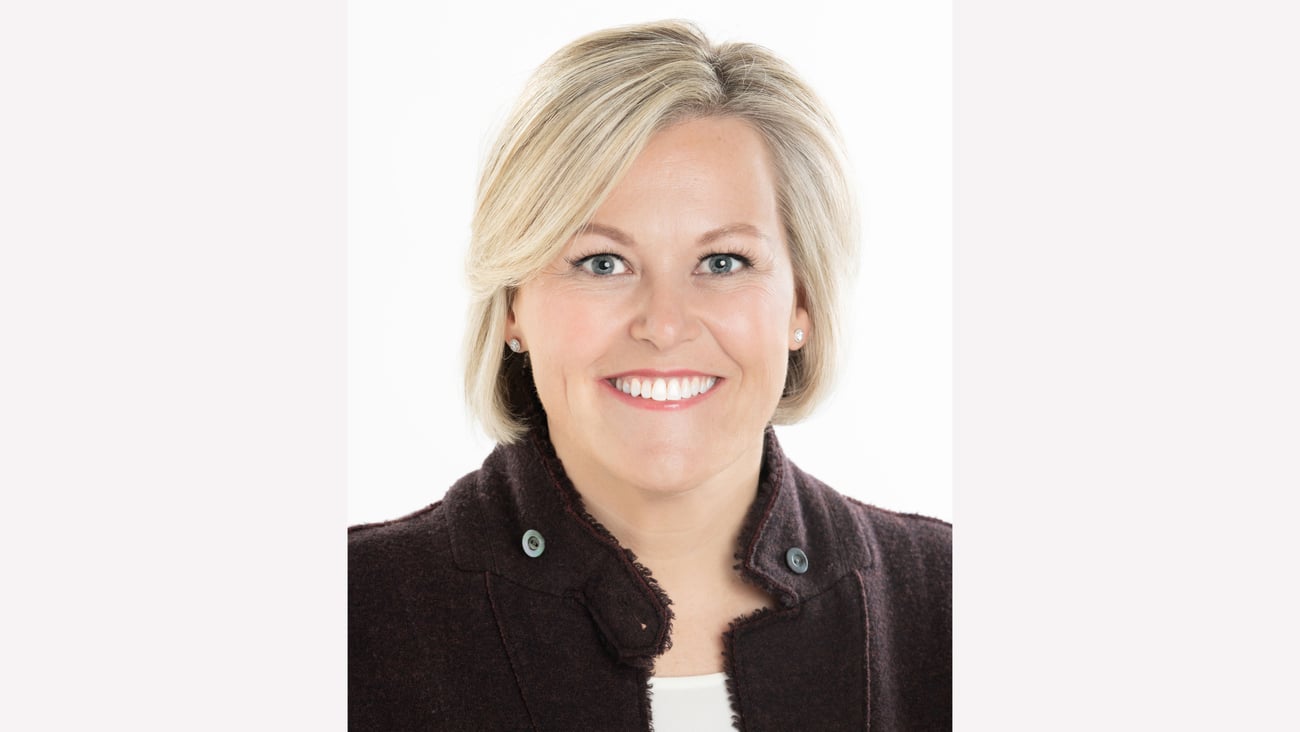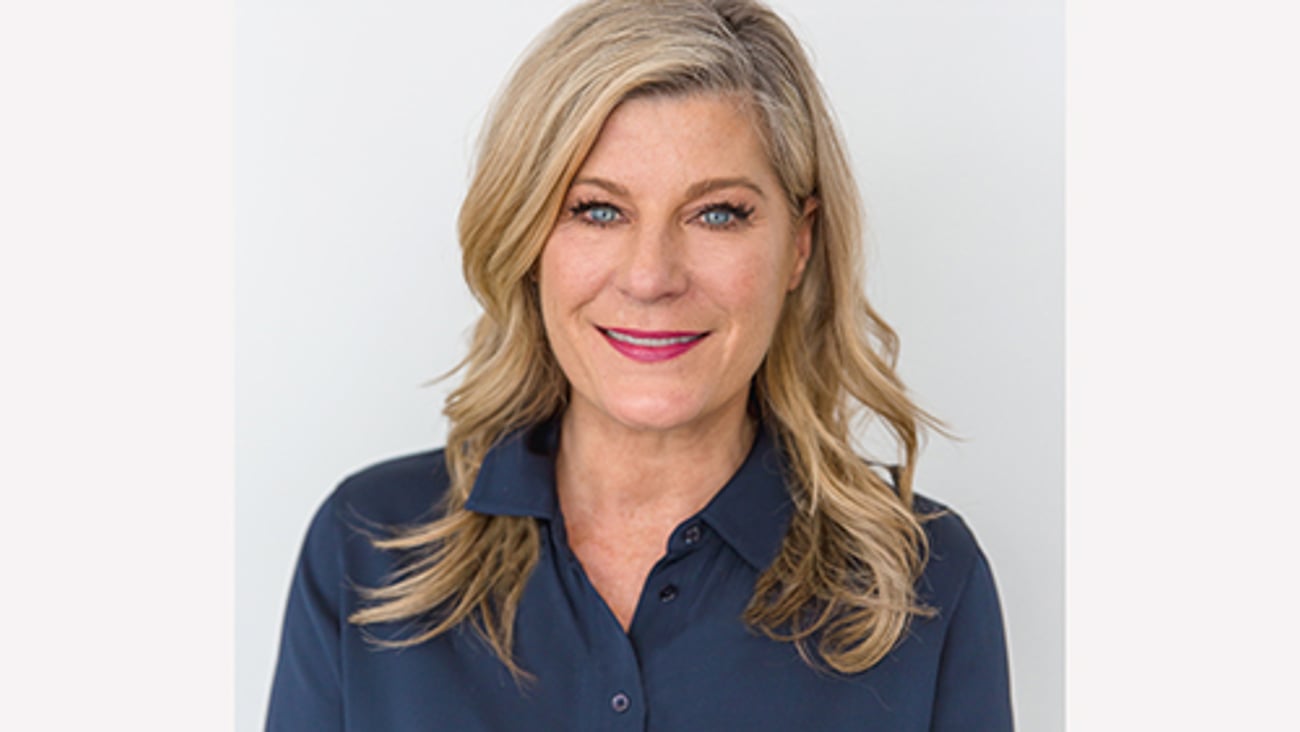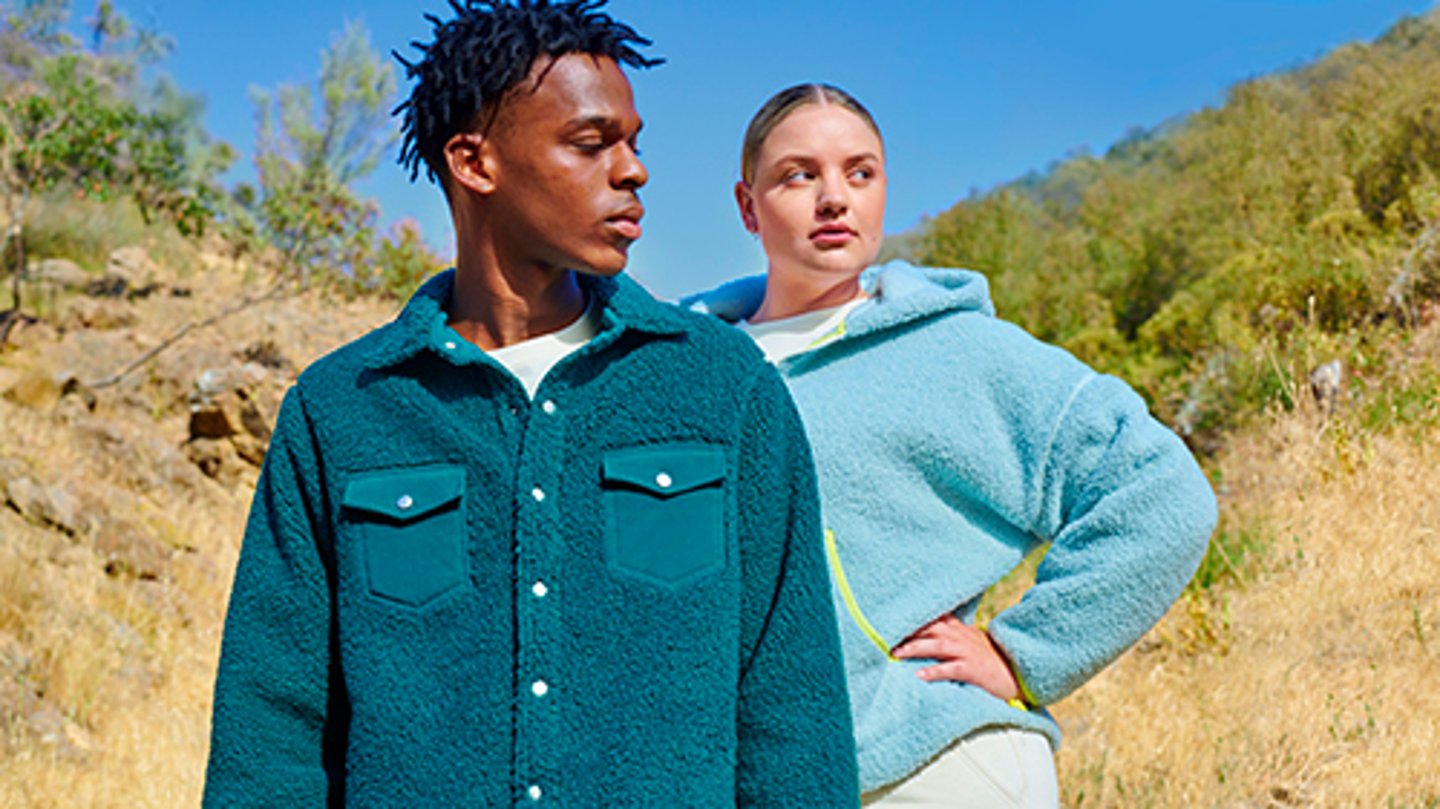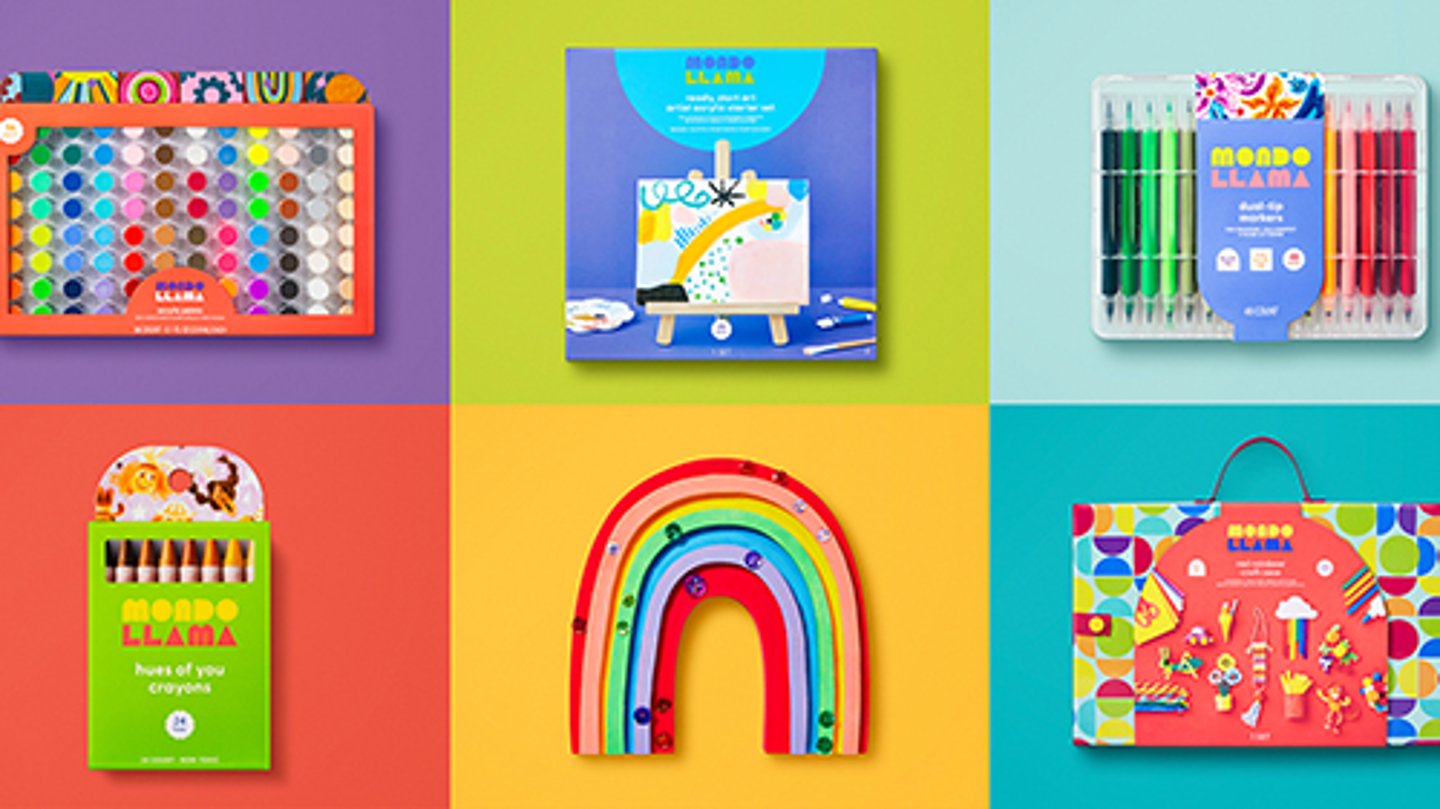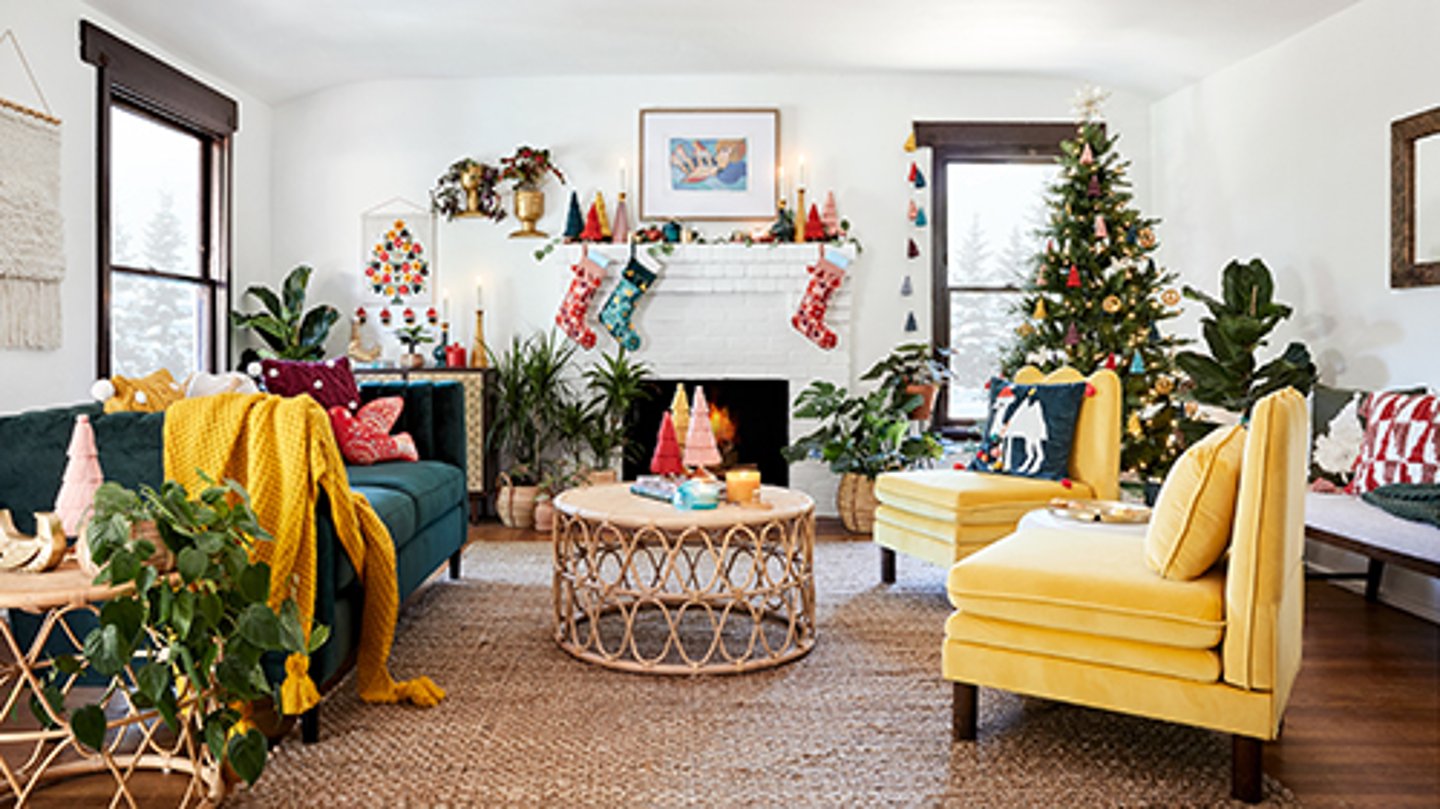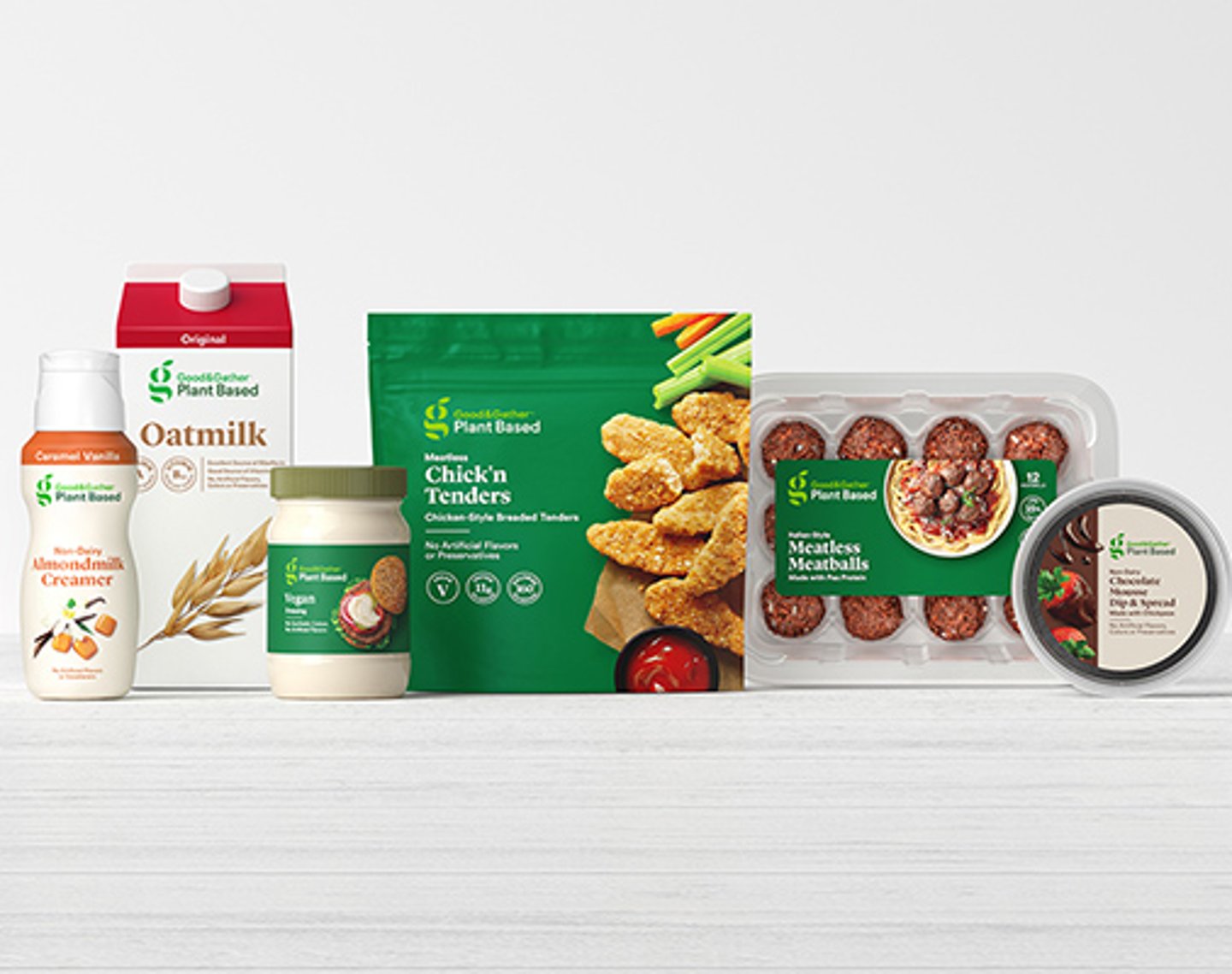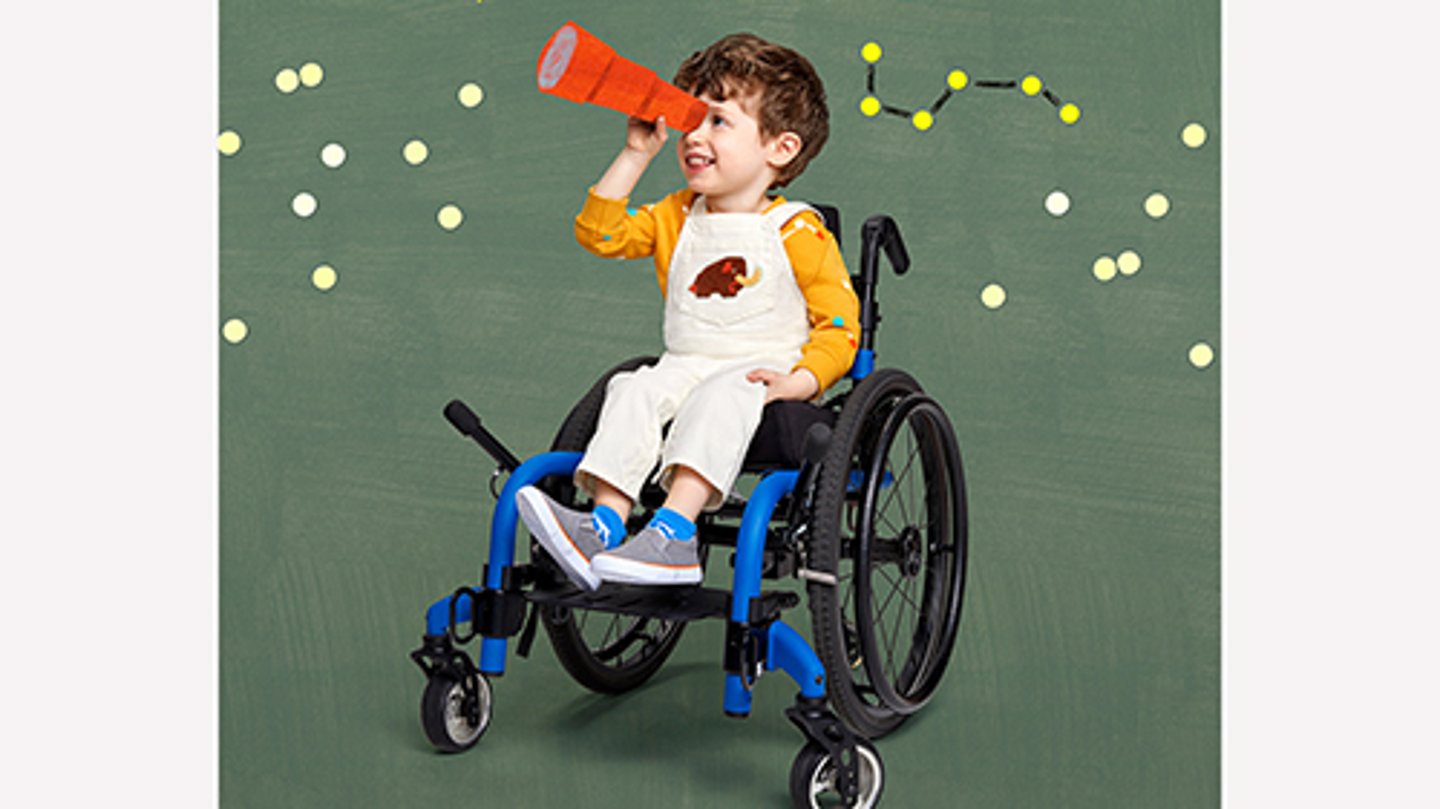Retailer of the Year 2021: Target
Record-breaking sales growth upon record-breaking sales growth: that’s how Target’s described the last two years, with owned brands playing a significant part. In fact, in the second quarter of 2021, sales of the retailer’s private brands outpaced all company growth, seeing a year-over-year sales lift in the “mid-teens.”
In Q2 this year, Target’s total sales were up more than 30% or $6.6 billion on a two-year stacked basis. The retailer said in March, regarding its Q4 2020 financial results ending Jan. 30, 2021 that owned brands represented a third of its sales, with four brands eclipsing $2 billion in sales (Cat & Jack, Up & Up, Threshold and Good & Gather).
In its most recent quarterly report, released late November, Target reported that all five of its core merchandising categories increased sales in the low- to mid-teens.
“Following comp growth of nearly 21% a year ago, our third quarter comp increase of 12.7% was driven entirely by traffic, and reflects continued strength in our store sales, same-day digital fulfillment services and double-digit growth in all five of our core merchandising categories,” said Brian Cornell, Target’s CEO during the financial call.
However, winning Store Brand’s 2021 “Retailer of the Year” designation isn’t just about sales — it’s also the Minneapolis mass merchant’s ambitious approach to sustainability, it’s Target’s “walk the walk” delivery on diversity, and it’s the chain’s fully realized vision of an innovative, powerhouse owned brand strategy that’s been five years in the making.
Billion-Dollar Vision
Following several interviews with the chain to discuss the Retailer of the Year honor, Target told Store Brands that in 2016, the retailer set out to reimagine its owned brand portfolio, putting in motion a new strategy of uniquely designed brands, driven by guest insights. In those five years, more than 30 store brands launched, and 10 of them surpassed $1 billion in sales. To date, Target manages more than 45 owned brands, with more to come.
Owned Brand Leadership
Some hallmark moments:
• A New Day, launched in 2017, the brand reached $1 billion in sales by its first anniversary;
• Cat & Jack, launched in 2016, surpassed $2 billion in 2017;
• Good & Gather, launched in 2019, the food line made its first billion in 2020;
• And in February, All in Motion, Target’s new activewear line reached $1 billion in sales, making it the 10th owned brand to do so.
The chain developed a new vision for its owned brands five years ago that blended art and science, listening closely to its guests for insights and empowering its design team of artists.
“When we set out to create new brands or design products within existing brands, it always starts with our guests. Our talented design team creates products with — and for — our guests with a keen eye on exceptional design at an incredible value,” Julie Guggemos, SVP, chief design officer, owned brand product design and management, told Store Brands. “They all play a distinct role in our total portfolio, anchoring intently to our unique guests’ needs and values like inclusivity, sustainability, quality and incredible value for all.”
Target’s design team is full of artists; in fact, there’s a painting studio at Target headquarters, where they’ve created roughly 10,000 unique pieces of art, some of which used on exclusive and store brand items. Target researches its guests in several ways, and leverages a virtual tool called Guest Studio where the team continually shares work for direct feedback in real time.
Christina Hennington, EVP and chief growth officer, told Store Brands: “The strength of Target’s business is a testament to our differentiated strategy, durable business model and incredible team. Our guests have always been at the heart of what we do, and our team’s ability to listen, learn, co-create and care for our guests is what makes Target a beloved brand and destination. This comes to life across our business, and it’s what sets our portfolio of owned brands apart.”
Total Store Offering
In 2021, Target’s owned brands continued to push boundaries, entering new categories like pet food and pet products through the Kindfull brand, entering crafts with Mondo Llama, revamping a dessert category via the new brand Favorite Day, and enhancing an established brand like Good & Gather by adding to its premium Good & Gather Signature rollout and debuting Good & Gather Plant Based.
“Owned brands like Good & Gather and Favorite Day play a critical role in Target’s food and beverage business,” Rick Gomez, EVP, chief food and beverage officer, told Store Brands. “Rooted in guest research and developed by our talented Target team — from the tasty, quality food items to the beautiful packaging — these owned brands are driving preference for Target by offering convenient, delicious and affordable options for all of our guests’ mealtime and snack needs."
Gomez remarks on the guest research again, something Target uses for all of the owned brands it develops — food to home goods. One example in home, in 2016, the retailer learned that its shoppers enjoyed the classic look of the Threshold line but craved more options. Over the next two years, the design team focused on more stylish, affordable products, creating Project 62 (a modern approach), Hearth & Hand with Magnolia (farmhouse-chic), Made By Design (everyday items), and Opalhouse (a more eclectic feel).
The latter is also an example of where Target stepped up its store brands to deliver on its promise of working with more Black-owned businesses. Similar to how it has partnered with Chip and Joanna Gaines for the Hearth & Hand with Magnolia line, Target began working with Justina Blakeney, an influencer and style expert behind Jungalow, which received an Opalhouse offshoot that will see annual, seasonal collections.
Target also continued its diverse partnerships via Hilton Carter, an influencer and plant lover that earned a limited-time-only run of exclusive items, and artist Christian Robinson, who introduced a limited-time run of products under the kids’ Pillowfort line. As part of its supplier diversity program, Target is working with a growing roster that are at least 51% owned, controlled and operated by women, Black, Indigenous and People of Color, LGBTQ+, veterans or persons with disabilities.
As part of the company’s Racial Equity Action and Change committee, Target has committed to spending more than $2 billion with Black-owned businesses (many of which will be exclusive to the retailer) by 2025. Inclusivity has been a staple of the All in Motion own brand, in sizing of the product and how ethnicities and people with disabilities are featured within the marketing.
Sensory-adaptive clothing and costumes for Halloween have long been part of the company’s offerings, too.
“We know that quality, stylish and inclusive design makes a huge difference in our guests’ lives, and at Target, we believe everyone deserves to feel celebrated and included,” Guggemos said. “From adaptive apparel and inclusive sizing, to partnering with more diverse designers and creators, the Target team designs every product with the goal of taking the unexpected and making it extraordinary — for everyone."
The retailer doesn’t just say it’s going to represent more voices, it’s doing the work — and through its store brands. In total, Target wouldn’t share how many suppliers it works with within its private brands but said suppliers play an integral part in how they innovate. The retailer said it looks for suppliers that bring ideas to the table as a way to maintain the style and feel that guests have come to expect.
Like all retailers, the peak pandemic period pressured Target and their suppliers to keep shelves stocked across the store, and they’re still working together against new challenges. “During a time that has had a profound impact on our guests and communities, the Target team has remained agile and thoughtfully curated a magical mix of products to meet their needs but also brought them joy when they need it most,” Jill Sando, EVP, chief merchandising officer, told Store Brands.
She added: “From the strategic partnerships we create, to the beloved national and DTC brands we bring to our assortment, our owned brands play a key role in continuing to differentiate Target. Our portfolio of owned brands brings something special to every category, driving traffic and excitement with the incredible design and value found exclusively at Target."
A Circular Future
The last major pillar of why Target has emerged as the 2021 Retailer of the Year is its commitment to using owned brands to drive a sustainable supply chain and eco-friendly future. In June, the retailer rolled out Target Forward, a broad sustainability pledge that includes a call to have 100% of its store brand products be designed for a circular future within the next two decades — eliminating waste, leveraging regenerative and recycled materials, sourcing responsibly, and creating products that are durable that can be easily repaired or recycled.
“This sustainability strategy reaches every corner of our business and sets our aim to be a market leader in creating and curating inclusive sustainable brands and experiences by 2030 and a net zero enterprise by 2040,” said Hennington. “From fostering an equitable, sustainable supply chain to designing and elevating sustainable brands, our commitment will take our owned brand portfolio to the next level and fuel continued growth.”
Through its store brands, Target will strive to design owned brand items that meet what its shoppers are looking for but also to reach a circular future, eliminating waste, sourcing sustainably and more. Just as it has elevated owned brands, the next chapter will include elevating sustainable brands.



